Sarah Orne Jewett House
“A harbor, even if it is a little harbor, is a good thing, since adventures come into it as well as go out, and the life in it grows strong, because it takes something from the world and has something to give in return.”
~ Sarah Orne Jewett ~
Many years ago, my brother-in-law’s Mother, Marlene, came to visit the family in Maine; Marlene and I shared an interest in Sarah Orne Jewett’s work, and it was my privilege to take Marlene to visit the writers home. Since then, it has become a regular stop on my New England grand tours, when it is open – those seasonal hours can be very difficult on us all.
A Portrait of the Writer
The Bookstore and Museum are housed next door, in the house which the writer originally lived in with her parents and sisters.
A View of Side of the House
The Gardens Behind the House
While one is not permitted to photograph the inside of the home, and must take a guided tour, which does enhance the experience, I urge to go to their website to see additional pictures, and have copied postcards, purchased at the house, for you to get a peek inside.
The Entry Hall
The Bedchamber
The Home Built Later For Sarah Orne Jewett’s Parents
“We were standing where there was a fine view of the harbor and its long stretches of shore all covered by the great army of the pointed firs, darkly cloaked and standing as if they waited to embark. As we looked far seaward among the outer islands, the trees seemed to march seaward still, going steadily over the heights and down to the water’s edge.”
~ Sarah Orne Jewett ~
From their website:
Sarah Orne Jewett House History
1774-1819: Haggens Ownership: A Prosperous Situation
1819-1887: Captain Theodore F. Jewett Ownership: Family Matters
1887-1931: Mary and Sarah Orne Jewett Ownership: Sophisticated Tastes
1931- Present: Becoming a Museum
“1774-1819: Haggens Ownership: A Prosperous Situation
In the mid-eighteenth century, the area that became the town of South Berwick, Maine, was already an active community. The area was well-situated for early mills, with ready access to abundant timber supplies and rivers for water power and transportation. Tilly Haggens emigrated to Berwick from Ireland around 1740 and acquired a large tract of land in an area known as the Plains. As the name implies, the Plains was a relatively flat and fertile area about a mile north of the Salmon Falls River. Haggens’ land was framed by two early roads, one running from the river north into Berwick, today’s Main Street, and the other running east to Portland, today’s Portland Street. The two streets met at a wide intersection known simply as The Corner. It was at this location that Tilly Haggens’ son John, a successful merchant and veteran of the French and Indian War, constructed a fine Georgian house in 1774. Around 1800, Haggens added a new one-story kitchen to the north side of the house. Haggens and his family continued to live in the house until about 1819.
1819-1887: Captain Theodore F. Jewett Ownership: Family Matters
Captain Theodore F. Jewett, a merchant and ship owner, moved his family from Portsmouth to the Haggens house in South Berwick in the 1820s. It appears that Jewett rented the house for a number of years, while the John Haggens estate was settled, finally purchasing it in 1839.
In 1848, Captain Jewett’s son, Doctor Theodore Herman Jewett, his wife Caroline, and their baby daughter Mary moved into the house with the Captain. Doctor Jewett began practicing medicine in town and a second daughter, Theodora Sarah Orne Jewett, was born in 1849. The young family continued to live with Captain Jewett until 1854, when a Greek Revival house was built next door for their use. Shortly after moving into the house, a third daughter, Caroline Augusta Jewett, was born.
Theodora Sarah Orne Jewett, named for her father and grandfather, but known to all as Sarah, would grow up to become one of Maine’s earliest and finest regional writers. Sarah became interested in writing early, publishing her first story, “Jenny Garrow’s Lover,” under the pen name A.C. Eliot in the Boston publication Flag of Our Union in 1868. The following year, at the age of twenty, she published her first story, “Mr. Bruce,” in the Atlantic Monthly, embarking on a long relationship with the journal, its editors, and the literary society of Boston and beyond.
1887-1931: Mary and Sarah Orne Jewett Ownership: Sophisticated Tastes
Sarah, who never married, continued living in the family’s Greek Revival house on Portland Street with her eldest sister, also unmarried, and their mother until 1887. In that year, Sarah’s uncle William died, leaving Captain Jewett’s house to the two sisters. Uncle William had inherited the house in 1860 from Captain Jewett. The three women moved into the old Jewett house and Sarah’s younger sister, Caroline, and her husband, Edwin Eastman, took ownership of the Greek Revival house next door.
Sisters Mary and Sarah decorated their grandfather’s house for their own use, expressing both a pride in their family’s past and their own independent, sophisticated tastes. While the sisters retained earlier wallpapers in four rooms, they made a dramatic statement in the aesthetic style in the front hall, choosing a bold Arts and Crafts pattern of tulips on a reflective ground to complement a William Morris carpet in the “Wreath” pattern.
Sarah died in 1909 in her grandfather’s house after suffering a stroke. Her sister Mary continued to live in the house, with frequent visits from their sister’s son, Theodore Jewett Eastman. Mary died in 1930, leaving the old family home to Eastman. Eastman bequeathed the old Jewett house and the newer Greek Revival house, which he also owned, to the Society for the Preservation of New England Antiquities, now Historic New England, upon his own death, just a year later in 1931.
1931-Present: Becoming a Museum
After Sarah Orne Jewett’s death in 1909, her bedroom was left as it was. The enshrinement of Jewett’s bedroom and two small display cases of objects, assembled by Theodore Eastman, indicate the Jewett family had an interest in keeping Sarah’s memory alive and possibly allowed visitors to see the house. Eastman’s subsequent gift of both Jewett houses to Historic New England supports this desire.
In its early years as a museum, the Sarah Orne Jewett House was named the Sarah Orne Jewett Memorial and the Jewett-Eastman house next door became the Eastman Community House. Though Theodore Eastman left the Jewett house to Historic New England, he did not leave its contents. The many books in the house were given to Harvard Library (Eastman’s alma mater) and the remaining contents were left to Eastman’s cousin, Mrs. H. H. Richardson of Boston. Some objects and furnishings stayed in the house, on loan or gifted to Historic New England by Mrs. Richardson, but others left the house. Furnishings were loaned from various interested parties, such as Elizabeth and Henry Vaughan of nearby Hamilton House, to help fill any missing gaps in the furnishing plan and in 1933, Harvard returned a number of books to the house on permanent loan.
From 1951 through the 1970s, visitors to the Sarah Orne Jewett House were greeted by South Berwick native Elizabeth Hayes Goodwin (1895-1992). Miss Goodwin was hostess at the Jewett House, giving tours several days a week during the summer months and serving as live-in caretaker from an apartment in the back ell of the house. Goodwin had known Jewett when she was a girl and had a deep devotion to the house and to sharing it with the public. “For some lucky visitors…a tour of the house ends with tea in Miss Goodwin’s own living room, once the Jewett kitchen,” wrote Marie Donahue in a 1977 article for Down East Magazine. “There are several mementos given by the Jewetts to the Goodwin family, including, in a place of honor, a miniature yellow tea set which Miss Goodwin as a child received from Sarah.”
In 1972, Historic New England honored Miss Goodwin for her many years of service at the house by dedicating the breakfast room to her. A plaque commemorating the event was presented to Elizabeth Goodwin by then-president Bertram Little. The plaque still hangs in the room today alongside a portrait of Miss Goodwin by local portrait artist Al Brule.
The Greek Revival house of Sarah’s youth served as a community center for decades in the twentieth century and became South Berwick’s library in 1970. The house was deaccessioned by Historic New England in 1984 when a local group, the Jewett-Eastman Memorial Committee, formed to take care and ownership of the property. During the years when the house served as the town’s library, Historic New England acted as an adviser to the Jewett-Eastman Memorial Committee and held preservation easements protecting the property. By April 2012, the library had outgrown the Jewett-Eastman House, and moved to a new home. This presented the opportunity for Historic New England to reacquire the property. Historic New England plans to take advantage of the two spacious parlors in the house to continue the tradition of using the building for community-centered events and programming.
In 1984, Historic New England restored the interior finishes of the Sarah Orne Jewett House to the period shortly after 1887, when Sarah and her sister Mary took up residence in the house and redecorated several rooms. Interior photos of the house, taken in the early 1930s, served as a guide for curators in the arrangement of furniture and decorative elements. Over the years, many items removed from the house have returned. In 2010, several important pieces of furniture, including Jewett’s original writing desk, will return to the house for permanent display.
Today’s visitors to the house experience the life of the author and her family. The home’s books, portraits, and photographs, many of them by some of the best known artists and writers of the day, give visitors a sense of Jewett’s dedication to her craft and to the impressive circle of literary minds with which she kept company. Her bedroom, largely untouched from the time of her death in 1909, and her writing desk give a firsthand sense of a woman not only deeply dedicated to her work, but also a generous and loving friend, and a person filled with curiosity and love for the natural world.”
“Yes’m old friends is always best, ‘less you can catch a new one that’s fit to make an old one out of.”
~ Sarah Orne Jewett ~

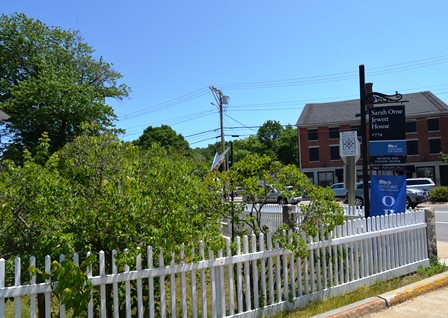
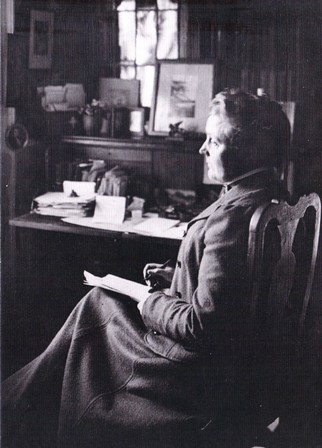
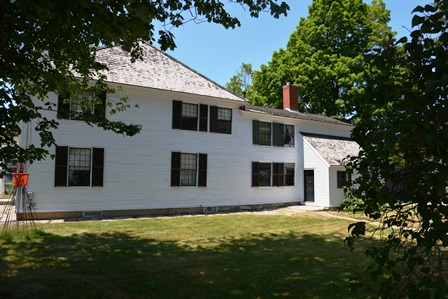
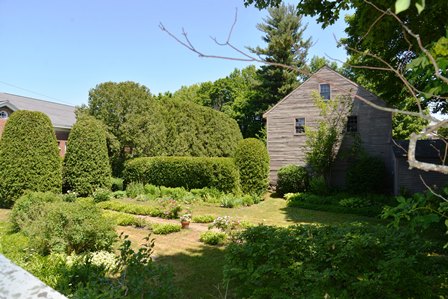
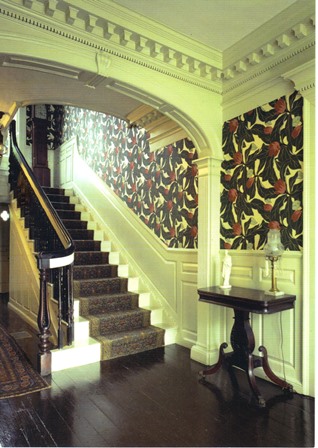
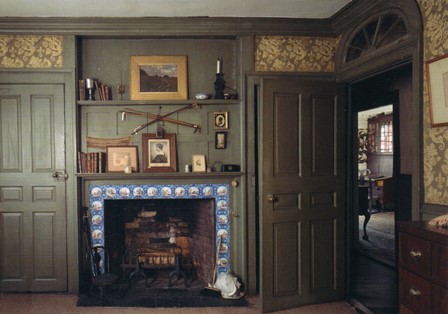
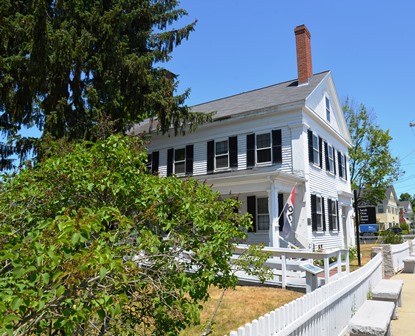





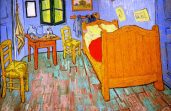
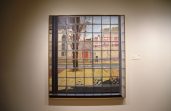
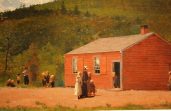
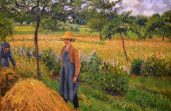

Wonderful information. I simply loved the first book and look forward to reading more of Jewet’s work.